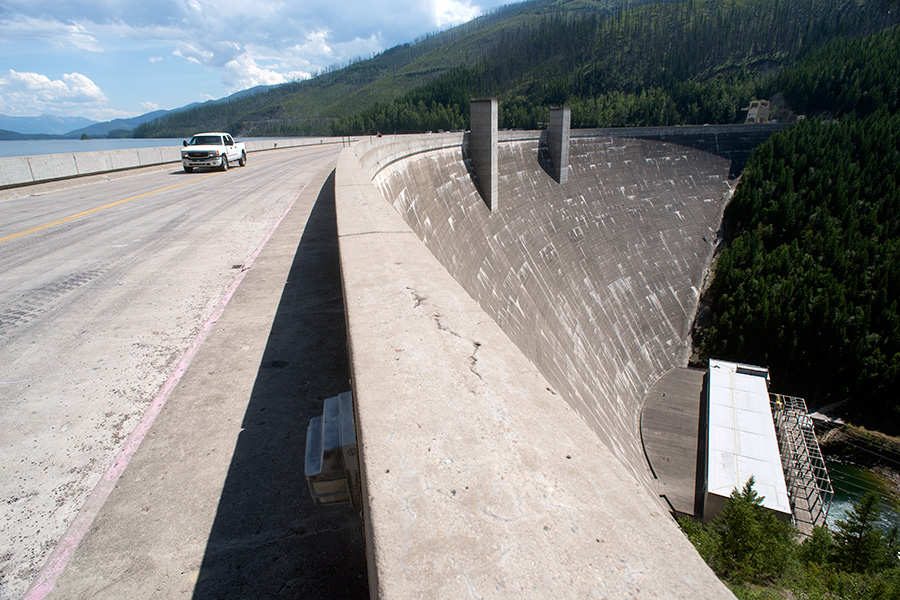It’s easy to wander around the Flathead Valley, take note of the power lines and solar panels, and then not think about the how and why of electricity until it goes out.
But sitting on both ends of the valley are two power-generating giants controlling the water levels in Flathead Lake and creating electricity sold on the grid for Montanans and out-of-state households.
Hungry Horse Dam and the Seli’š Ksanka Qlispe Dam, formerly named the Kerr Dam, operate continuously to maintain lake and river levels, while also generating power from different branches of the Flathead River.
On the South Fork of the river, the Hungry Horse Dam was built from 1948 to 1953 with the purpose of producing hydroelectric power and controlling flooding. It’s 564 feet tall, 2,115 feet long and 34 feet wide, and it stores nearly 3.5 million acre-feet of water in the reservoir behind it.
It’s also 64 years old, as is most of its major equipment. With that in mind, the U.S. Bureau of Reclamation is in the planning stages of a major modernization project for the Hungry Horse Dam, worth about $200 million and expected to take about a decade to complete.
Ben Miller, project manager for Hungry Horse modernization at the Bureau of Reclamation, said the upgrades will make the dam more efficient, as technology has evolved considerably in the decades since its construction.
“The Hungry Horse Dam was built in the early 1950s, and a lot of the infrastructure currently in it is from that same era,” Miller said. “A lot of it has hit the end of its useful life.”
The project includes “all sorts of new technology,” Miller said, and will be the largest project undertaken at the dam since its inception.
The facility’s four turbines will likely be replaced, along with switchgear and related electrical equipment, the mechanical governor, the excitation systems, and the dam’s cranes.
“This will make the dam and power plant more efficient — it’s run down,” Miller said. “It will bring a lot things up to current safety standards, especially the cranes.”
The Bureau of Reclamation is still in the project’s planning phases, with a National Environmental Policy Act (NEPA) review expected to be completed this year and actual construction to begin in 2019, starting with the cranes.
Construction is expected to continue through 2030.
The work hasn’t yet been awarded to contractors, but Miller said the local economy could likely expect a boost with the construction project.
“There might be some projects where it does get awarded locally,” he said. “If nothing else … with contractors coming in from out of state, there would be some added boost (in housing, food and other economic sectors).”
On the other end of Flathead Lake, the SKQ Dam is running efficiently and well despite a very dry summer, according to Travis Togo, director of power management at Energy Keepers, Inc.
It’s been an odd summer, Togo said, because the spring was so wet, with 297 percent of average water supply in the Flathead Basin in March compared to historical data. But there was practically zero precipitation in June and July.
“It’s business as usual — the company and the resource and the functioning are happening as planned,” Togo said in an interview last week, on the morning of the first ground-soaking rain in months. “The only drag has been the weather: hot and dry and smoky. We went through a period of time without any rain for so long.”
Energy Keepers, a corporation of the Confederated Salish and Kootenai Tribes, took over management and ownership of the dam from NorthWestern Energy in 2015, renaming it the Seli’š Ksanka Qlispe Project, or SKQ Dam for short.
As part of managing the dam, Energy Keepers will coordinate the lowering of lake levels in the fall to mitigate shoreline erosion before raising levels again in June to allow for recreation, irrigation, a fishery, and other non-power objectives.
